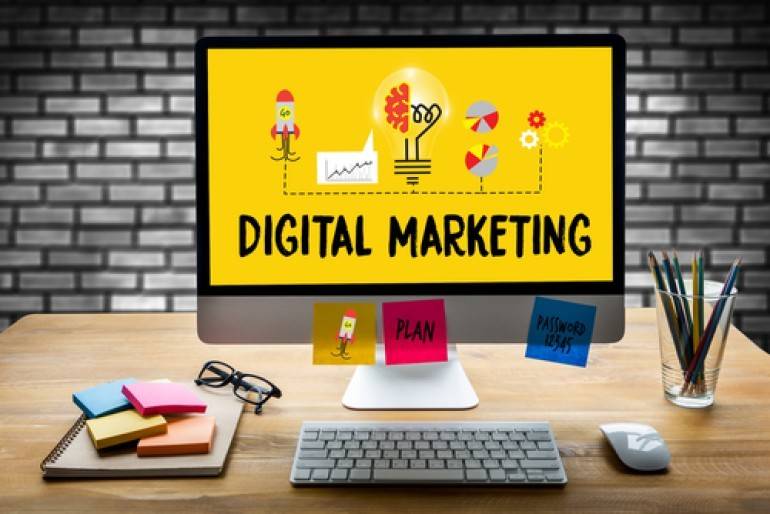Digital marketing has evolved a lot over the last two decades.
We’ve seen the rise and fall of major search engines, the dominance of Google, the rise of video streaming, email marketing, social media, and so much more.
For many companies, digital marketing is the reason for their success. Whether they dominate PPC campaigns, use savvy email marketing to nurture leads, or have a powerful SEO strategy in place. But for every company that gets it right — there are countless ones that make common digital marketing mistakes. This guide is designed to highlight some of these common mistakes. Here are what we believe are ten of the most common digital marketing mistakes companies are making.
1. Not Thinking About Mobile
Mobile is everything today. Almost everyone has a smartphone, and they use these phones daily to access content online.
One report suggests that nearly 3.5 billion people use their smartphones every day. This is over 45.12% of the world’s population. Mobile usage is only going to grow over time as these devices become more powerful.
A successful digital marketing strategy must prioritize mobile. Make sure that you are optimizing your content for mobile use. This means creating content that is compatible with a wide variety of mobile devices. Responsive design is a popular method that simplifies this common pain point.
Remember, content that’s not optimized for mobile users may be costing you business!
2. Not Writing Copy That Sells
Even though you may have a lot of website traffic, that traffic means nothing if your website isn’t converting. Copywriting is often the answer to many problems websites are experiencing.
The entire message of your website needs to resonate with your target audience. It must appeal to their needs, be relatable, and show that you understand the pain points they are experiencing.
A software company may drive home the core savings and performance boost its software offers, while an apparel company may focus on durability, style, or popularity.
Whatever products or services your company sells, make sure the copy resonates with your target audience. You can play around with writing impactful headlines that appeal to a variety of emotions, benefit-driven copy, and more to see what works best for your business.
3. Not Leveraging the Power of Discounts and Promotions
Discounts and promotions are valuable tools to drive conversions and build customer loyalty.
They are an easy way to make your customers feel like they came out ahead. A company like Michaels lives and dies by coupons, and uses them to increase the average order value of each sale.
Another powerful strategy is to leverage promotions to bring existing customers back into the fold. You can send these discount codes through emails, social media interactions, and other marketing channels.
4. Failing to Communicate Your Value Proposition
Customers don’t always buy products because they love them — they buy them because they solve a problem in their life.
When you advertise your product, do not simply describe its features. Describe how it will transform their life, solve a major problem they are experiencing, or how it will create value for them.
Humans are value-driven. We always want to feel like we are coming out on top. Use this to your advantage when promoting your business online. Show what value you can create for them in their lives.
5. Not Leveraging Social Media
Social media is powerful that all companies need to be using in 2020. The set it and forget it approach that many companies use is a huge mistake.
There is simply no good reason for you to avoid using it for your business since most of your customers are most probably using this platform. It’s a great way to interact with people and learn about what they think.
You can also use social media to market to your customers when they are in their comfort zone. With targeted campaigns, you can reach relevant users and remarket to them through retargeting.
Some companies have even built entire strategies around improving the customer service experience using social media.
6. Trying to Target All Customers
You cannot target everyone. A successful marketing campaign must focus on a target audience.
Consider the demographics that you want to focus on and create marketing campaigns that appeal to their pain points and needs. If you have a large target audience, you may need to narrow it down. You will spend far too many resources trying to appeal to all customers.
Take the time to create dedicated target personas for each of your products and services. One approach to this that works for many companies is the StoryBrand framework.
7. Not Aligning Marketing Goals With Sales Goals
Sales and marketing go hand in hand, but the goals of both departments don’t always align. It’s vital that they work together to meet a common goal, which is to make the customer happy.
The goal of marketing is to create “awareness,” while sales aim to make a profit for the business. When you can find common ground between these two departments, you will see drastic improvements in all of your core KPIs.
One approach is to create marketing materials that empower your sales department. When you take a nurturing approach, your sales teams will have access to a variety of content that is beneficial for all aspects of the sales cycle.
8. Having a Slow Loading Website
Slow websites are hurting your business. Today, Google is heavily focused on page load speeds and mobile optimization.
Every extra second that your website takes to load increases the chance that a customer will drop-off. Users are impatient and expect direct access to the content they are looking for.
Take the time to optimize your website by compressing images, removing unnecessary code, improving all aspects of the visual experience, and verifying that you are hosting your website with a reliable website hosting provider.
9. Not Taking Advantage of Email Marketing
There are a lot of ways that you can do free marketing, but none of these methods compare to the value email marketing can provide.
Re-evaluate your methods of why email marketing didn’t work for you before, because when done properly, this is a powerful tool that can yield a high return on investment (ROI).
Every stage of your marketing campaigns should be working to collect a customer’s email. From there, you can develop targeted lists based on where a customer is in the sales cycle. You may send coupons to long-term customers, targeted flash sales to people who abandoned their cart, and other brand-specific material that can build customer loyalty.
10. Using Poorly Crafted Call to Actions (CTAs)
Call to actions are very important because they tell your customer what to do next. For many companies, the CTA is an afterthought. But this is the wrong approach.
Your customers won’t always figure out the next steps on their own. A CTA guides them through the process and steers them towards your desired outcome. CTAs are your best tool to collect vital information like emails, phone numbers, book appointments, and more.
Globalgraphics: Experienced Digital Marketers Serving Small-Medium Sized Businesses
Has your company made some of these digital marketing mistakes? Don’t panic — you’re not alone.
The first step to creating a successful digital marketing strategy is to understand where you have gone wrong. The next step is to find the right creatives to help you build a strategy that converts browsers into buyers.
If you’re looking for a proven digital marketing agency, look no further than Globalgraphics. We’ve been helping businesses of all sizes create winning digital marketing strategies for over a decade.
Get in touch with our team today by calling 0121 667 8667 to see what we can do for your business.


